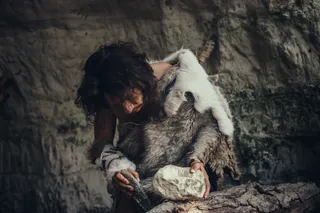Late one November afternoon in 1532, Atahualpa, the ruler of the Inca Empire, approached Cajamarca, a town couched in a valley of the Peruvian Andes, to meet with a small band of foreigners. His empire stretched from modern Ecuador south, between the Pacific and the Andes mountains, to central Chile. Having just won a costly but decisive victory against his brother in a battle of succession, Atahualpa approached his new visitors without fear. He left the majority of his soldiers, who numbered in the tens of thousands, camped outside the town.
Lonnie Thompson inspects ice core samples before they’re sent to an Ohio State lab. Romeo Gacad/AFP/Getty Images
Accompanied by a retinue of several thousand unarmed men, Atahualpa was ceremoniously carried into Cajamarca on a litter. He wore an impressive emerald collar, while the lords, counselors and commanders who accompanied him were adorned in richly colored clothing and headdresses of ...














